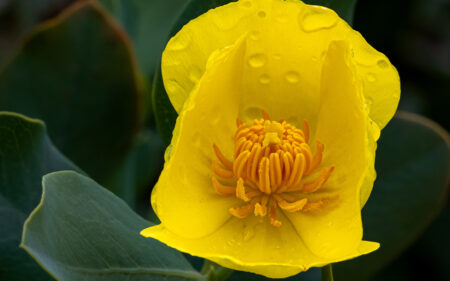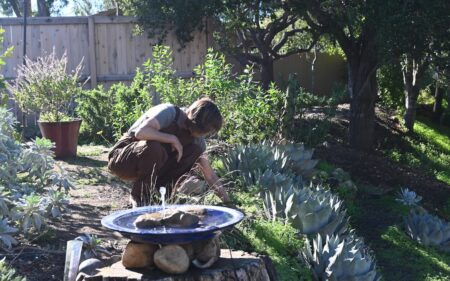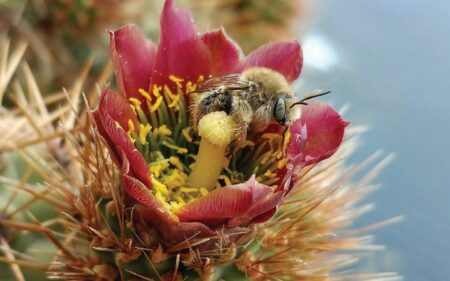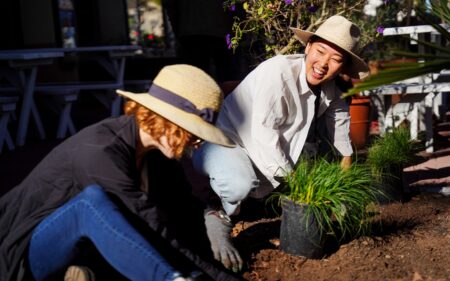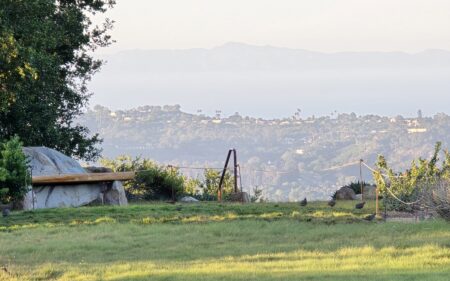My Talk with Botanist and Illustrator Linda Vorobik, Ph.D.

Linda Ann Vorobik, Ph.D. is a botanist, botanical illustrator, and frequent collaborator with Santa Barbara Botanic Garden. At the Garden, we feel lucky to have her support as both a professional illustrator providing technical illustrations for the Garden’s floristics (including the forthcoming, comprehensive flora of all eight California Channel Islands) and an instructor providing guidance to our members and public.
Linda has worked as a researcher, educator, and illustrator for a number of projects, including Sierra Nevada Plants: Wildflowers to Trees, and The Jepson Manual: Higher Plants of California. Ahead of her next class here at the Garden, we asked Linda some of our burning questions about drawing plants, botany, and connecting to nature through art.
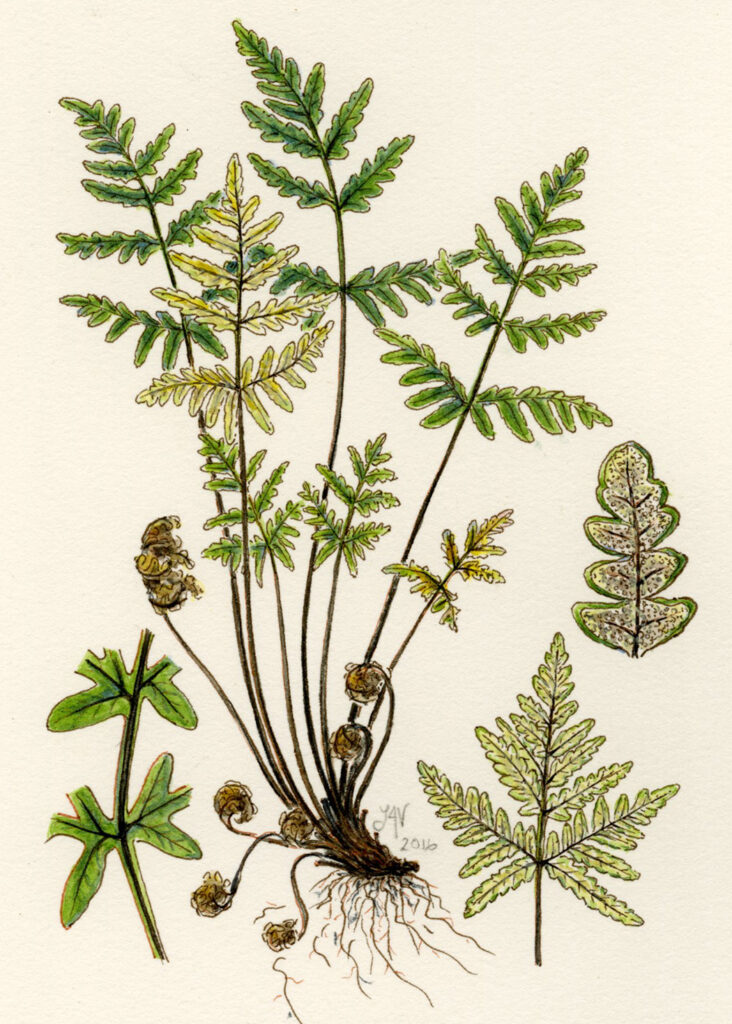
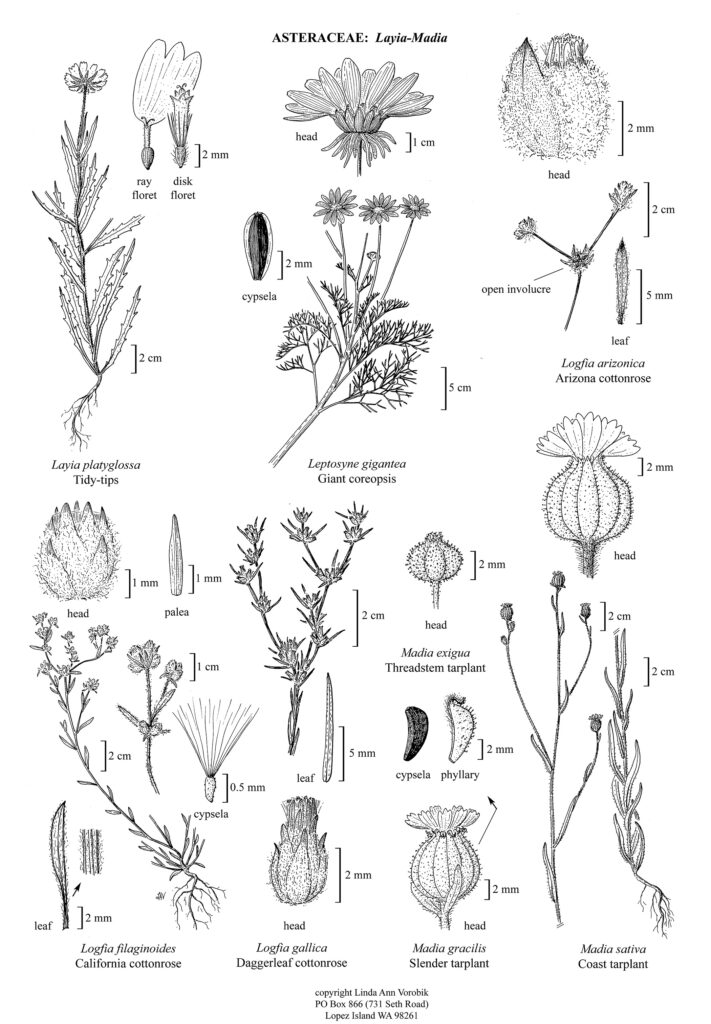
Asteraceae plate from A Flora of Santa Catalina Island, M. Guilliams et al.
How early did you develop a passion for art? Botany?
My passion started when I was a child. Luckily for me my parents purchase the land I am living on now in the San Juan Islands, WA, so I grew up with summers and weekends surrounded by natural beauty. And instead of toys for Christmas, I received art supplies!
Botanical illustration fits squarely in between both art and science. How does your art inform your science and vice versa?
I am a “traditional” botanist. The work I do as a botanist has everything to do with very careful observation. And, that is what botanical illustration is all about – careful observation. The great advantage to me as a botanical illustrator is that I know how to use the dissecting microscope (a tool used by scientist that offers a magnified, 3-dimensional view of a specimen). I also understand botanical literature and know and understand botanical terminology and what I am looking for in terms of details.
You’ve done botanical illustrations for a number of seminal California floras, including the Jepson Manual, Santa Barbara Botanic Garden’s Floras of Santa Cruz Island and Flora of San Nicolas Island, as well as the forthcoming flora for all eight Channel Islands produced by the Garden. How has producing all of those illustrations helped you become a better botanist?
Don’t forget the upcoming Flora of Santa Catalina Island! What a delight it has been to study and illustrate all of these plants, especially those for the Channel Islands. In so doing, I have become more familiar with the plants of southern California. Many don’t realize that I am a Ph.D. botanist as well as an artist, and through illustration I have greatly increased my familiarity of the plants of California. My job as an illustrator is to create drawings that support the keys and descriptions, and because of this I have read and used all of these keys for groups of plants that I have illustrated. I have become an aficionado for well-written keys, was a technical editor for Steve Botti’s Yosemite Flora, and I have taught numerous classes and workshops helping participants know how to use botanical keys (and at times have recognized their shortcomings).
What advice do you have for someone who is interested in improving their botany skills?
Keep a sketchbook with notes. Take as many classes and workshops as you can and botanize with a friend! (My favorite botany friend is Susan Dalcamo, my supervisor for The Jepson Manual illustrations and creator of the Jepson Workshops).
What advice do you have for someone who is interested in improving their botanical illustration skills?
Draw, draw, draw and become a botanist. Try starting with your local Native Plant Society, sketch at your local (or any) botanic garden, take as many botany and botanical art workshops as you can, apprentice with a botanist, but only for a few drawings – then charge for your services.
Are there any exercises you recommend for anyone who is interested in better identifying plants and recognizing different plant structures?
Practice, practice, practice. Take classes and workshops. Work with a friend. Persevere!
What kinds of basic equipment do you recommend for someone who is interested in learning botanical illustration, particularly in the field?
For field work, a HB Pentel pencil, white plastic eraser, hand lens (or most phones have a magnifier), and a small notebook (easy enough to carry in field).
For color, a small color pencil or watercolor kit.
For comfort, clothes appropriate for weather. Something to sit on is nice, bug dope, sunscreen, and a hat.
And a few deep breaths to calm yourself in preparation for what I call: “long dates with plants”.
You can also check out my blog for more on this specific question, too.
“Long dates with plants”. . . I like that! Can you describe what a great plant date looks like to you? How long do you spend with a plant? Are you working in the field primarily, or bringing specimens to a studio?
I think the primary reason I love the phrase “long dates with plants” is that no matter how long I look at a specimen, be it preserved or alive and in the field, I always discover more about it. The example I like to refer to is my painting of a flower of Dodecatheon pulchellum (or Primula pulchellum, if you must). I had seen this plant many times in the field, but until I did a painting of it, I had never noticed the amazing colorful detail of the flowers!
I have a variety of dates I enjoy.
Working on the Channel Island floras or new species illustrations, my dates are herbarium specimens, but since I am a museum nerd, and an herbarium being a museum of (mostly) pressed plant specimens, these dates are really cool. I enjoy challenging myself to bring a squished brown plant specimen into 3-dimension, reveling in the details I find by driving around using the dissecting microscope.
Watercolor dates are a different flavor. Creating a simple drawing, then thinking about color as well as form. These are all of the good sensual stuff of working with paints and brushes.
Some of my very favorite dates are in the field. It is really fun encountering a species I haven’t seen alive before compared to having only seen one of its dead preserved relatives stuck to an herbarium sheet!
Can you leave us with five common California-native plants or structures that you love to draw?
I love them all! That is like asking a parent to name their favorite child! How I can answer this is to say that I do enjoy orchids and ferns and I am especially fond of any member of Asteraceae. This family seems formidable, but once you take a close look at the head of the comp in question, you can usually go right to the genus. And come to think of it, I really enjoy the difficult groups, grasses, sedges, rushes, Atriplex, and Phacelia, for example. I feel that I am helping botanists with their task of identification if I do a good job on my illustrations.
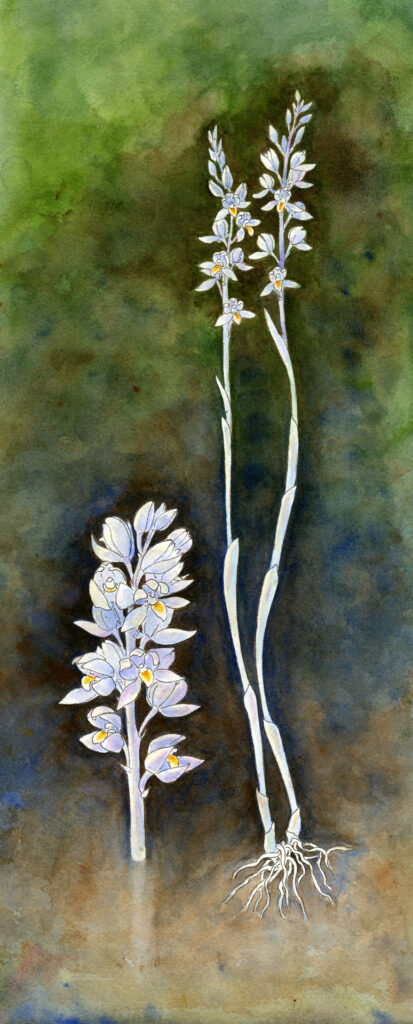


 Donate
Donate
